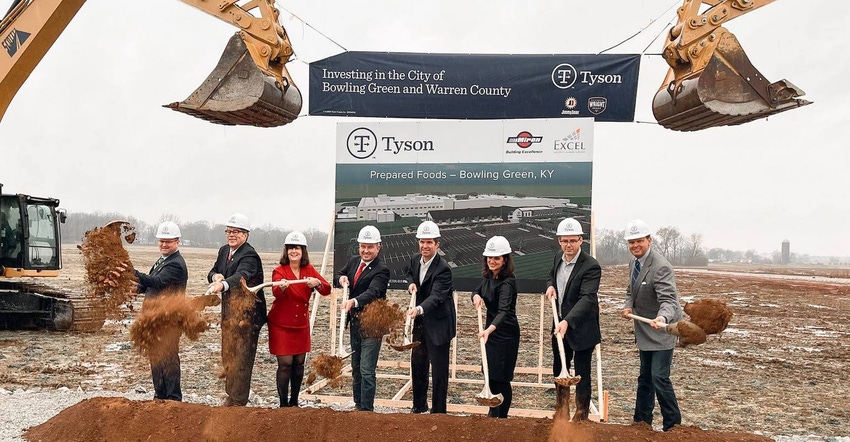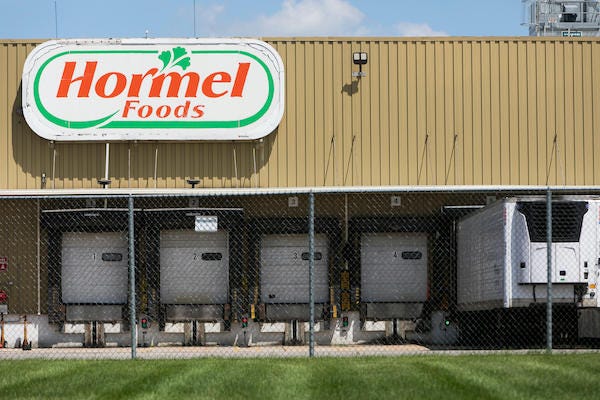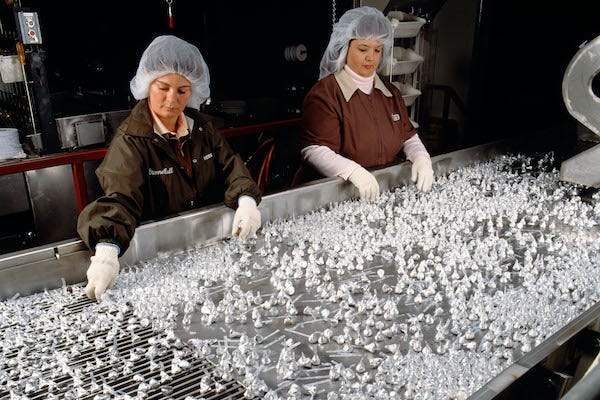A number of major food and beverage firms are injecting more funds into capital expenditures this year to address high demand and supply chain issues.

Food and beverage processors faced a range of challenges in 2021 as COVID-19 continued to batter the supply chain. Companies faced labor shortages, issues with raw material suppliers, higher material, labor, and transportation costs, and more. These woes are expected to continue to impact the food and beverage manufacturing industry throughout 2022.
This year, a number of major food and beverage players are increasing capital expenditures (capex) to address these persistent issues. Powder & Bulk Solids showcases examples of how five of the industry’s top manufacturers are looking at capex in 2022.
Hormel Foods
SPAM maker Hormel Foods plans to increase its capex spend from $232 million in 2021 to $310 million this year as the company carries out several major projects and invests in automation at some of its existing facilities. The firm will complete an expansion of pepperoni production at its Omaha, NE facility in the second quarter and a project to boost its capacity for the SPAM product line will reach completion in 2023, Jacinth C. Smiley, group vice president, corporate strategy for Hormel Foods, detailed in an earnings call this December. The investments are intended to help the company meet rising demand.
“In addition to these larger products, we are continuing to invest in cost savings, technology, and automation projects to drive long-term savings and efficiencies,” Smiley said.

President and chief executive officer Jim Snee told listeners that the company’s efforts to implement automation technology at existing facilities increased in 2021 and that several projects are underway in 2022. The executive signaled that Hormel will commit substantial resources toward automation in the coming years.
“We’re allocating resources in our engineering organization that we’ve never had before to make sure that not only are we identifying existing automation, but really helping to support and develop automation that isn’t even out there yet, that we believe we need in our operations,” Snee said. “So, I mean there’s still a long way to go, a lot of work to be done. But there is a very, very keen focus in our organization to get us there.”
Post Holdings
Cereal and food products maker Post Holdings injected $192.5 million into capex during its fiscal year 2021, according to the company’s annual report. Its largest single investment during the period was a project to reconstruct its facility in Bloomfield, NE after the location was destroyed in a 2020 fire.
Post noted in a filing this month with the US Securities and Exchange Commission (SEC) that the company will dedicate $250 million to $300 million toward capex in its fiscal year 2020. $40 million will be invested in the buildout of a new ready-to-drink (RTD) shakes plant to support its BellRing business.
Hershey Co.
Iconic American chocolate and snacks firm Hershey Co. announced that it will commit $550 million to $600 million to capex in 2022 in the firm’s full year results for 2021 released this February. The funds will be used to further “key strategic initiatives, including expanding the agility and capacity of the company’s supply chain and building digital infrastructure across the enterprise,” Hershey noted in the release.
“As it comes to supply, we continue to invest in incremental capacity. There is incremental capacity that will gradually come online as we go through this year and also into 2023 and 2024,” chief executive officer Michelle Buck said in the firm’s most recent earnings call.

Company officials told investors that several capacity-related projects are underway in a bid to ease supply chain issues.
“Today we don’t have enough capacity to meet all the consumer demand. We’ve had some floor manufacturing lines come online 2021. We have more in Reese’s and Pay Day and Jolly Rancher Gummies that will come online in 2022,” stated senior vice president and chief financial officer Steve Voskuil. “But even with that we feel like we’re behind consumer demand.”
McCormick & Company
Seasonings supplier McCormick & Company spent $278 million in capex last year as it worked to increase its production capacity to meet high demand and optimize parts of its network, the company said in a call with analysts in late January. Company officials maintain that these moves helped the company to persevere through challenges posed by the COVID-19 pandemic.
“In the year-ago period, elevated demand challenged our supply chain, whereas in 2021 with the actions we took to add capacity and increase resilience, we are far better positioned and able to ship in line with consumption,” the firm’s chairman, president, and chief executive officer Laurence Kurzius said to listeners.
Several capital projects are currently underway, including an investment to expand the manufacturing capacity of McCormick-owned clean and natural flavor solutions manufacturer FONA International.
“In 2022, we expect our capital expenditures to be higher than 2021 as we continue to spend on the initiatives we have in progress, as well as to support our investments to fuel future growth,” Mike Smith, executive vice president and chief financial officer, stated on the call.
Tyson Foods
American protein products supplier Tyson Foods said in a call this month that it plans to spend $2 billion in fiscal year 2022 to beef up capacity and implement automation technology across its network. Work started this month on a new $355 million bacon production plant in Bowling Green, KY.
“We have a number of different projects, and we have really moved from a project to project to more of a programmatic approach where we attack common things across our production footprint. For example, [it] could be deboning across all chicken, could be like palletizing, for example, an automation that’s available across the entire enterprise, material handling-type things,” Tyson’s president and CEO Donnie King said on the call, “but all these are in terms of priority or the more difficult, harder to staff jobs.”
The company expects its capex investment to provide $300 million to $400 million in productivity savings.
What’s Next?
It is clear that the impacts of the ongoing COVID-19 pandemic on the workforce and consumer demand weighed heavily as companies determined their capex budget for 2022. Some top firms like Tyson are investing aggressively in capacity and automation, while others are putting funds into smaller, targeted projects.
Powder & Bulk Solids expects that many food and beverage processors will launch or accelerate capital projects this year as the industry continue to navigate the headwinds of unmet high consumer demand, shifts in attitudes on work and employment, and the uncertainties of the current public health situation.
About the Author(s)
You May Also Like




